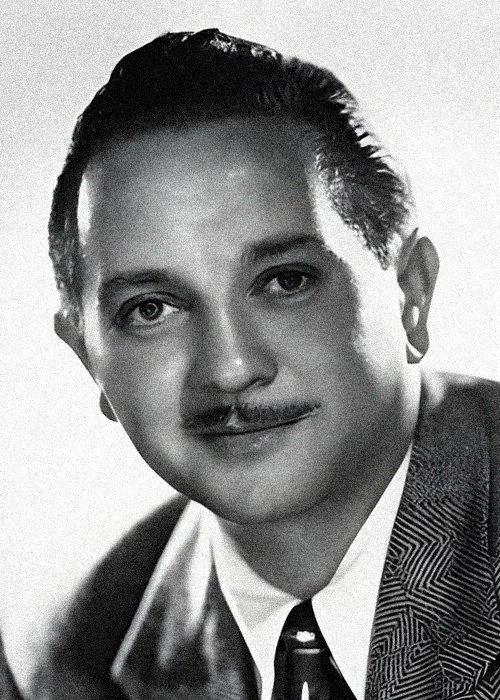
Gil Elvgren (1914–1980) is widely regarded as the most influential pin-up and glamour artist of the 20th century. Over a prolific career spanning more than four decades, he created an unforgettable legacy of idealized American femininity — playful, elegant, and irresistibly charming. Though best known for his pin-up work with Brown & Bigelow, Elvgren’s artistry extended into advertising, editorial illustration, and storytelling, making him a quintessential figure of American visual culture.
After studying at the American Academy of Art in Chicago, Elvgren joined the famed Stevens and Gross advertising agency and was mentored by Haddon Sundblom, the artist behind Coca-Cola’s Santa Claus. By 1937, Elvgren was painting pin-ups for Louis F. Dow, and in 1945 began his defining 27-year collaboration with Brown & Bigelow. His signature canvases, sized 30 x 24 inches, featured the “girl-next-door” caught in a humorous or flirtatious moment — always naughty but nice.
His artwork graced calendars, billboards, and advertisements for brands like Coca-Cola, General Electric, Ford, Ovaltine, Sylvania, and Sealy Mattress. Elvgren also illustrated for major magazines such as The Saturday Evening Post, Good Housekeeping, McCall’s, and Cosmopolitan. During WWII, his pin-ups became morale-boosting icons, reproduced as nose art on aircraft and jackets by soldiers around the world.
Beyond pin-ups, Elvgren’s work embodied the American Dream: charming families, cheerful teens, and cozy domestic scenes. His advertising work for Coca-Cola during the 1940s and 50s helped define the brand’s visual identity, with his “Coke Girls” becoming timeless symbols of post-war optimism.
Influenced by legends like Charles Dana Gibson, Howard Chandler Christy, J.C. Leyendecker, and Norman Rockwell, Elvgren blended classic technique with a modern, lighthearted approach. He worked from staged photographs he shot himself, often preferring young, fresh-faced models whose natural charm could be translated into his whimsical compositions.
Today, Gil Elvgren is recognized not just as a commercial artist but as a classical American illustrator whose contribution to glamour art, advertising, and storytelling remains unmatched. His work continues to influence generations of artists and collectors — a legacy of grace, humor, and beauty that still captivates to this day.
Before he became America’s leading pin-up artist, Gillette “Gil” Elvgren was just a small-town boy from St. Paul, Minnesota, with a passion for sketching in the margins of his schoolbooks. Born on March 15, 1914, Elvgren grew up in a family of entrepreneurs — his parents ran a paint and wallpaper store, where his love for color and composition likely took root.
In 1933, at just 19, he eloped with his high school sweetheart, Janet Cummins, a decision that marked the beginning of a lifelong partnership. That same year, Gil decided to pursue his true calling and enrolled at the American Academy of Art in Chicago. Janet and Gil moved to the city together, embracing a new life of artistic ambition and domestic stability.
They built a family with three children — Karen, Gil Jr., and Drake — and made their home in Illinois before later relocating to Siesta Key, Florida. For over a decade, they lived in Winnetka, where Elvgren transformed the attic of their French Provincial house into a home studio. There, he painted more than 20 works a year, often with the help of an assistant who managed props, lighting, and photography.
Though Elvgren’s public persona was defined by glamorous women in playful situations, at home he was a private, disciplined man — a devoted husband and father. He had a deep appreciation for photography, always shooting his models personally to ensure the perfect pose and mood. As his son Drake recalled, Elvgren didn’t look for beauty in the traditional sense: “He wanted the approachable girl — cute was more important than beautiful.”
One of his favorite models, Myrna Hansen, began working with him at age 15 and later became Miss USA. Another was Kim Novak, the future Hollywood star. Despite working with such iconic figures, Elvgren remained humble, always focused on capturing authenticity and charm rather than seduction.
He continued to work actively through the 1960s, but as photography replaced painted illustration in advertising, his commissions dwindled. In 1980, Elvgren passed away at age 65 from cancer, leaving behind not only a celebrated artistic legacy but also a life defined by love, family, and integrity.
Today, his works are housed in private collections, galleries, and auction houses — but his most enduring legacy may be the warmth and playfulness he brought to every canvas, and the life he lived away from the spotlight.
Although he was never formally awarded during his lifetime, Elvgren is now widely recognized as one of the greatest pin-up artists of the 20th century. His artistic influence continues to thrive — both in the art market and in the popular imagination.